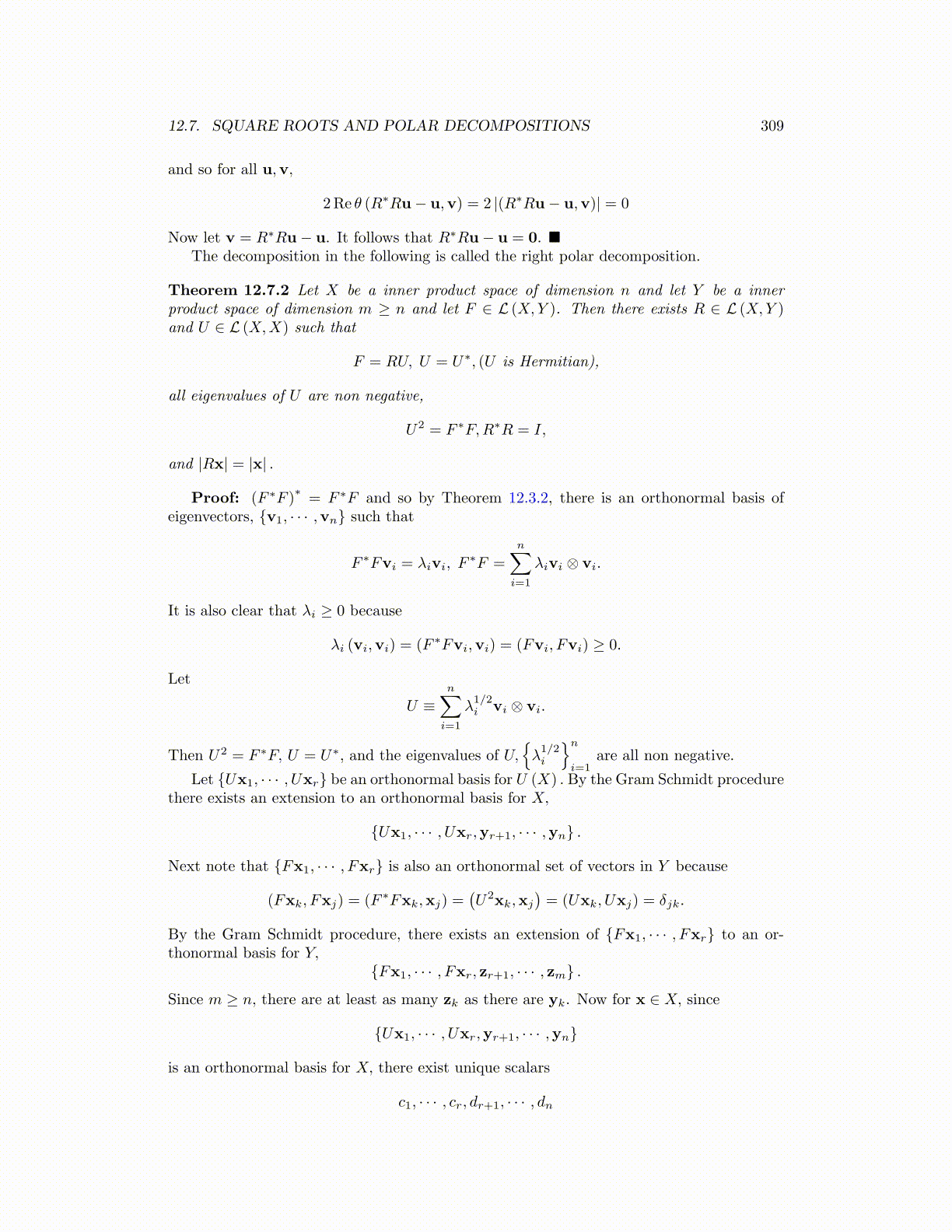
12.7. SQUARE ROOTS AND POLAR DECOMPOSITIONS 309
and so for all u,v,
2Re θ (R∗Ru− u,v) = 2 |(R∗Ru− u,v)| = 0
Now let v = R∗Ru− u. It follows that R∗Ru− u = 0. ■The decomposition in the following is called the right polar decomposition.
Theorem 12.7.2 Let X be a inner product space of dimension n and let Y be a innerproduct space of dimension m ≥ n and let F ∈ L (X,Y ). Then there exists R ∈ L (X,Y )and U ∈ L (X,X) such that
F = RU, U = U∗, (U is Hermitian),
all eigenvalues of U are non negative,
U2 = F ∗F,R∗R = I,
and |Rx| = |x| .
Proof: (F ∗F )∗= F ∗F and so by Theorem 12.3.2, there is an orthonormal basis of
eigenvectors, {v1, · · · ,vn} such that
F ∗Fvi = λivi, F∗F =
n∑i=1
λivi ⊗ vi.
It is also clear that λi ≥ 0 because
λi (vi,vi) = (F ∗Fvi,vi) = (Fvi, Fvi) ≥ 0.
Let
U ≡n∑
i=1
λ1/2i vi ⊗ vi.
Then U2 = F ∗F, U = U∗, and the eigenvalues of U,{λ1/2i
}n
i=1are all non negative.
Let {Ux1, · · · , Uxr} be an orthonormal basis for U (X) . By the Gram Schmidt procedurethere exists an extension to an orthonormal basis for X,
{Ux1, · · · , Uxr,yr+1, · · · ,yn} .
Next note that {Fx1, · · · , Fxr} is also an orthonormal set of vectors in Y because
(Fxk, Fxj) = (F ∗Fxk,xj) =(U2xk,xj
)= (Uxk, Uxj) = δjk.
By the Gram Schmidt procedure, there exists an extension of {Fx1, · · · , Fxr} to an or-thonormal basis for Y,
{Fx1, · · · , Fxr, zr+1, · · · , zm} .
Since m ≥ n, there are at least as many zk as there are yk. Now for x ∈ X, since
{Ux1, · · · , Uxr,yr+1, · · · ,yn}
is an orthonormal basis for X, there exist unique scalars
c1, · · · , cr, dr+1, · · · , dn